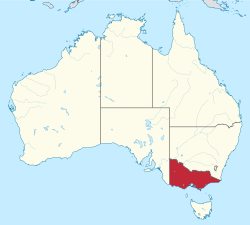| Port Phillip New South Wales—Legislative Council | |
|---|---|
 Location of the District in 1843. Same as current-day Victoria. | |
| State | New South Wales |
| Created | 1843 |
| Abolished | 1851 |
| Namesake | Port Phillip |
| Electors | 1,157 (1843) |
| Coordinates | 37°S144°E / 37°S 144°E |
The Electoral district of Port Phillip was an electorate of the New South Wales Legislative Council before it became the separate colony of Victoria (Australia) on 1 July 1851. At the time, some members of the council were elected and the balance were appointed by the Governor. The Town of Melbourne returned one member while the Port Phillip district, which covered the rest of what became Victoria after its separation in 1851, returned five members. [1]